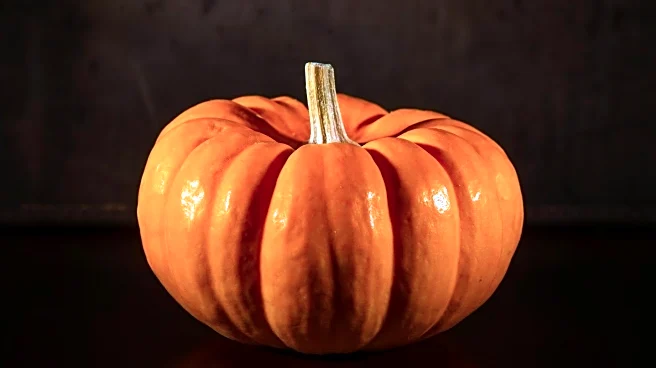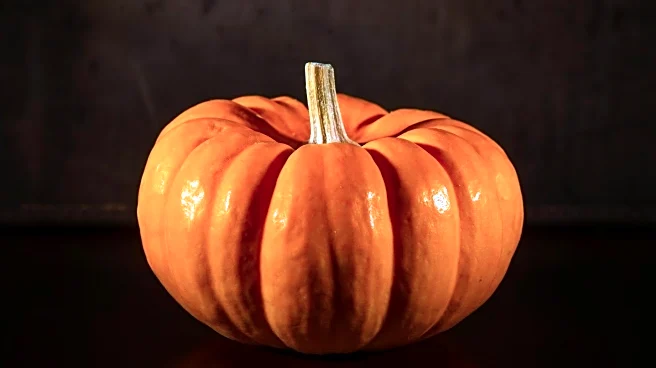What's Happening?
Joe Adkins, a giant pumpkin grower from suburban Chicago, is part of a global community dedicated to cultivating massive pumpkins. These enthusiasts spend hours daily tending to their pumpkin patches,
aiming to grow pumpkins that can weigh over 2,000 pounds. Adkins, who has won multiple titles at the Illinois Giant Pumpkin Growers Association's annual weigh-off, dedicates significant time to his craft, using techniques like spraying fungicide and setting up fans to prevent rot. The community of growers is expanding, with competitions and festivals held across the U.S., and the practice is gaining popularity worldwide.
Why It's Important?
The cultivation of giant pumpkins is more than a hobby; it represents a unique agricultural niche that combines traditional farming with modern techniques. This practice highlights the potential for innovation in agriculture, as growers use advanced methods to achieve record-breaking results. The community aspect fosters collaboration and knowledge sharing, which can lead to further advancements in agricultural practices. Additionally, the popularity of giant pumpkin growing contributes to local economies through festivals and competitions, drawing visitors and promoting agricultural tourism.
What's Next?
As the community of giant pumpkin growers continues to grow, there is potential for further advancements in cultivation techniques. The use of technology, such as climate-controlled environments and advanced soil management, could lead to even larger pumpkins in the future. The global interest in giant pumpkin growing suggests that international competitions may become more prominent, fostering cross-cultural exchanges and innovations. Additionally, the increasing popularity of this niche could inspire new generations of growers, ensuring the tradition continues to thrive.
Beyond the Headlines
The giant pumpkin growing community also faces challenges, such as the unpredictability of weather and the threat of diseases. These factors require growers to be adaptable and innovative in their approaches. The practice also raises questions about sustainability and resource use, as the cultivation of such large pumpkins can be resource-intensive. However, the community's focus on sharing knowledge and techniques may lead to more sustainable practices in the future.













